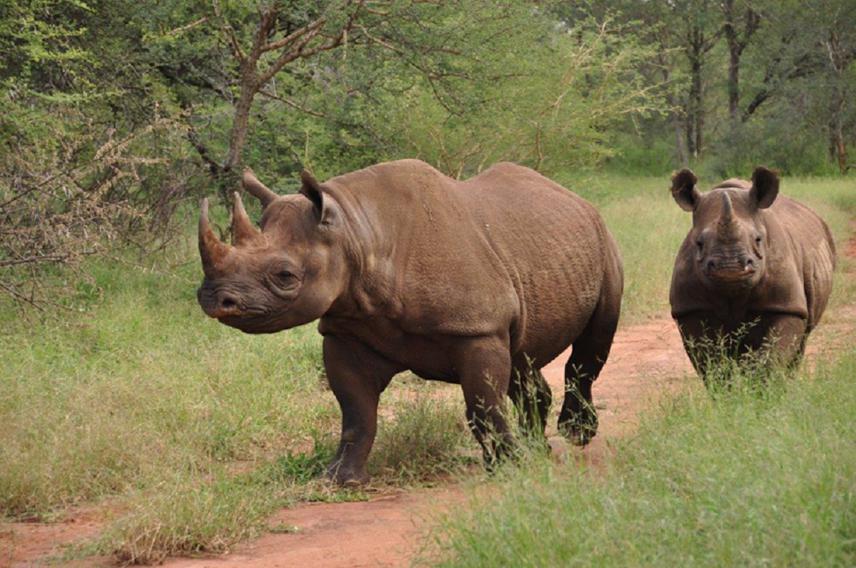Nikki le Roex
This project aims to establish a non-invasive protocol to obtain DNA from black rhino, and use genetic data to infer the size, diversity and breeding success of the population for management purposes.

Black rhino.
South Africa is currently experiencing an unprecedented escalation in poaching and illegal wildlife trafficking, with both black and white rhino populations suffering massive losses. The black rhinoceros (Diceros bicornis) has suffered enormous reductions in range and population size during the 20th century, and is classified as ‘Critically endangered’ on the IUCN Red List. The majority of black rhino in South Africa are found in small, isolated populations that were founded by few individuals. These populations are extremely vulnerable to reduced genetic diversity and inbreeding depression, and isolation prevents natural dispersal and gene flow between populations. Populations with reduced genetic diversity may be more susceptible to new selective pressures such as disease or drought, and often display reduced fecundity or survival over time. These effects may be masked for a few generations, but over time these effects can have a significant impact on both short and long-term population viability.
Genetic tools can be used to determine the above parameters, and genetic rescue or restoration strategies can be employed by conservation managers to offset the negative effects of inbreeding and loss of diversity in isolated populations. These strategies use translocation to fulfil the role of animal dispersal and facilitate genetic exchange between populations. At the very least, determining the effective size and breeding dynamics of a population can be extremely beneficial to decisions on whether or not intervention is required or desirable.
Thus we will test a non-invasive monitoring protocol using faecal DNA samples to estimate the population size and genetic parameters of black rhino populations. The genetic data generated will be used to estimate the relatedness, breeding success, minimum population size, genetic diversity and levels of inbreeding within the population. This information will be fed back to the national conservation authority, in order to inform management decisions. This represents an important step in maximizing breeding potential and maintaining a viable metapopulation of black rhino within South Africa.